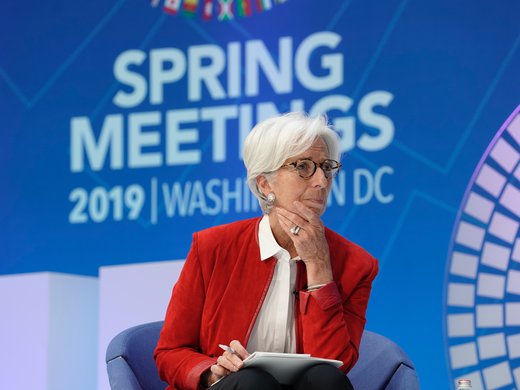The global rise of digital giants is spurring recognition that Canada’s competition laws are overdue for reforms needed to match the challenges of the modern economy. But just as important as the laws themselves is the structure of the institutions charged with administering and adjudicating them. Even the most well-calibrated laws can founder if institutions are ill-suited to enforce them, and growing dissatisfaction with other federal regulatory bodies such as the Canadian Radio-television and Telecommunications Commission (CRTC) reminds us that the legitimacy of these institutions depends on whether Canadians believe they are being well-served.
Canada’s efforts to regulate major tech firms have so far focused on cultural policy and privacy protections, and have entertained both a larger role for the CRTC and the new role of Artificial Intelligence and Data Commissioner. But should the scope of the government’s response to big tech expand to include competition, Canada has an opportunity to reform the existing regulatory institutions to better execute that response.
Canada’s Constrained, Opaque and Concentrated Current State
The institutional framework for enforcing competition law in Canada is bare-bones. The federal Competition Bureau is the sole investigator and enforcer of Canada’s competition laws, outside of private parties who have limited rights to bring cases, and the Competition Tribunal, a specialized adjudicative body with competition expertise, is the first stop for all non-criminal competition matters.
There is reason to believe that the institutions enforcing Canada’s competition law are straining under the current state, but they provide Canadians with little information with which to assess the scope of the problem. Take the Competition Act’s abuse of dominance provisions, an important avenue for Canada’s laws to address anti-competitive conduct. The Competition Bureau has not brought an abuse-of-dominance case to the Tribunal in more than five years, an interval similar to previous lengthy droughts (in 1996–2000 and 2003–2008). What little public information we have suggests the investigations that lead to bringing a case before the Tribunal are protracted affairs. For example, in August 2020 the Bureau requested input from market participants related to an abuse-of-dominance investigation against e-commerce giant Amazon, but no information has been provided since on when that investigation started, its current status, or if there will be any future updates to the public — in contrast to how international peers such as the United Kingdom’s Competition and Markets Authority communicates to the public. As for the Tribunal, it appears to be hitting its own capacity wall, as it has still to decide a case that was heard (at time of writing) nearly two years ago, about the merger of two grain elevator operators — a wait with potential harms for Manitoba farmers. No reason has been given for this historic delay, particularly concerning as the Tribunal gears up to hear arguments for the sprawling Rogers-Shaw merger case.
Although additional resources and the addressing of factors that delay investigations could ease these constraints, these examples show how concentrated the decision points on competition issues are in Canada. Competition law is an evolving discipline, involving the working out of questions about how we structure our economy. But the power of the Competition Bureau is held by its head, the commissioner of competition, who effectively directs the flow of the body of law, with material outcomes for the daily lives of Canadians. Even an infinitely well-resourced Bureau would, in its current state, still funnel all its decision making through a single commissioner determining what cases are brought before the Tribunal during their five-year term. This concentration is then repeated in the Competition Tribunal itself, where, as Julie Rosenthal and David Rosner have noted, nearly all Tribunal decisions over the past decade have been written by two individuals, Justices Paul Crampton and Denis Gascon.
Canada’s competition law framework is responsible for protecting and promoting competition in all markets, present and future, within our nearly $2 trillion-a-year economy. The Competition Bureau is charged with understanding not only Canada’s mature industries but also the competitive challenges in new and emerging markets, an iterative process that governments and competition authorities in other countries have engaged in over the past decade. The question is, then, what kind of institutional structure might both alleviate the issues seen today and allow Canada’s competition law to better respond to the competitive challenges in dynamic and evolving markets.
Canada could consider the role of an integrated regulator that combines sector expertise with a focus on preventing monopoly, and regulating it where it is unavoidable or beneficial.
More Dispersed and Centralized Approaches to Competition Law Enforcement
Two countries, the United States and Australia, offer differing but complementary visions of what the future of the institutional design of Canada’s competition law framework might look like.
Although the United States’ institutional structure, with its two centralized federal agencies, the Federal Trade Commission (FTC) and the Department of Justice Antitrust Division, may seem similar to Canada’s, it’s actually much more decentralized. First, each of the 50 state attorneys general can bring cases under federal or state antitrust laws, either individually or in partnership with other states and their federal antitrust peers, as has happened in several ongoing big tech antitrust cases. The United States also has a robust private action ecosystem, where individuals and corporations can take one another to court over violations of antitrust laws. Although detractors worry about corporations bringing frivolous lawsuits against competitors, private action cases in the United States have generated meaningful jurisprudence that has shaped the evolution of the country’s antitrust laws. By combining a centralized regulator — in particular, the FTC, whose mandate extends beyond the country’s antitrust laws to include consumer protection and unfair competition — with a decentralized approach to identifying and remedying individual competition concerns, the United States has created a vibrant ecosystem for competition law and policy.
Representing an approach that skews toward further centralization, the Australian Competition and Consumer Commission (ACCC) has a broad mandate to make markets work for consumers. The ACCC is a sprawling regulator responsible for not only enforcing Australia’s competition laws, but also protecting consumers, regulating national infrastructure such as telecommunications, and overseeing prices in markets with limited competition. This explicit combination of regulation and competition enforcement, as well as the centralization of expertise across multiple sectors, allows the regulator to build a deep and cross-cutting understanding of an economy beyond one-off cases in a given market. This approach has given Australia, a country two-thirds the size of Canada, a leading voice on competition issues in digital markets. Since 2017, the ACCC has proactively investigated competition issues in digital markets, completing inquiries into digital platforms and digital advertising services, and it is now in the midst of a five-year inquiry of digital platform services. Beyond the value of this kind of analysis to the global understanding of digital markets, this proactive inquiry means the ACCC starts from an already informed position when responding to violations of competition law in these markets.
What Might the Future of Canadian Competition Enforcement Look Like?
Combining the examples of these seemingly disparate peers creates a potential picture of the future of the institutional design of competition law enforcement in Canada.
First, Canada could recognize the value that decentralization and diversity offer for a richer and more effective body of law. The centralization of Canada’s competition law has resulted in anemic jurisprudence shaped by a small handful of actors. By expanding the number of players in Canada’s competition ecosystem, Canada could energize this area of law and increase the likelihood that competition is protected and promoted even in the most dynamic sectors of our increasingly complex economy. To do so, Canadian provinces could explore their role in a broader push for increasing competition, up to and including consideration of complementary provincial competition laws and enforcers. In parallel, the role of private action could be expanded, to increase the number of eyes watching for anti-competitive conduct in our economy. These changes would necessitate a rethink of the structure of Canada’s first-stage competition court, to either give it expanded capacity and expedience to handle a more active body of law, or do away with it entirely in favour of a broader legal system more familiar with and involved in the development of competition law jurisprudence.
Second, although seemingly moving in the opposite direction, Canada could consider the role of an integrated regulator that combines sector expertise with a focus on preventing monopoly, and regulating it where it is unavoidable or beneficial. Although competition and regulation are often considered at cross-purposes, competition law is a form of regulation, and bringing these approaches together within a single regulator could alter the perspective Canada brings to both competition enforcement and sectoral regulation. Learning from our Australian colleagues’ experience in both conducting their digital market inquiries and establishing the ACCC’s Digital Platforms Branch, we might include in the mandate of a regulator in this model the intentional and proactive building of expertise and resources dedicated to new markets. This function would serve to not only inform future approaches to competition law enforcement but also generate analysis that could be put to use by elected officials and other policy makers within government.
The institutions that make up the foundation of Canada’s competition laws concentrate the future of the field in too few hands and appear to be straining to meet their mandates. If Canada is to truly make competition a pillar of its economic policy, these institutions will need to change to meet the needs of a more active and vibrant competition law ecosystem. Learning from our global neighbours, a promising path for that change might be to simultaneously expand the number of actors responsible for protecting competition, while centralizing and investing in the expertise needed to understand the markets critical to the present and future of Canada’s economy.



